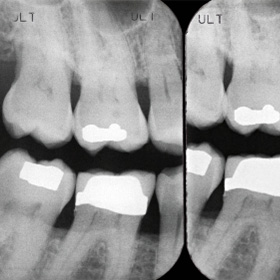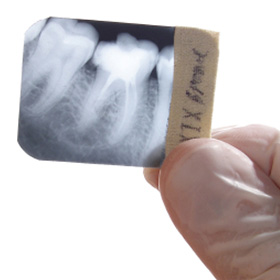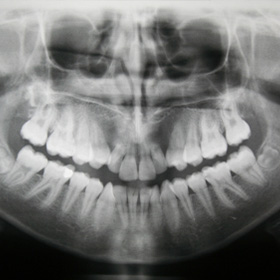What are dental scaling and root planing?
Scaling involves using hand and ultrasonic instruments to remove plaque and tartar build-up on tooth surfaces. Root planing is the process of removing cementum (the thin protective layer on the root surface) and dentin (the inner layer of the tooth) that is rough, fused with tartar, or infected with microorganisms and bacteria.
Why are dental scaling and root planing necessary?
The bacteria that live in our mouth feed off the sugars we eat and combine with food to form a sticky, acidic substance on teeth called plaque. Plaque is produced in our mouths every day, and accumulates on teeth and gums. If left in your mouth for too long, it calcifies into tartar (also called calculus) and becomes difficult to clean yourself.
Plaque and tartar that stay on your teeth and in your gums cause bacterial infection which, in the early stages of gum disease, is known as gingivitis. This is when scaling and root planing step in to help keep your mouth clean.
Scaling removes plaque and tartar and root planing smooths out the root surface so that plaque can be cleaned more easily. These procedures help prevent plaque and tartar build-up and allow the gum tissues to heal. If gum disease is left untreated it can lead to bone and tooth loss.
Brushing twice a day with a toothbrush and a small amount of fluoride toothpaste help prevent dental problems by effectively and safely cleaning plaque off. Using floss every day helps to clean between the teeth and below the gum line, helping to prevent gingivitis and cavities.
All material copyright MediResource Inc. 1996 – 2024. Terms and conditions of use. The contents herein are for informational purposes only. Always seek the advice of your physician or other qualified health provider with any questions you may have regarding a medical condition. Source: www.medbroadcast.com/healthfeature/gethealthfeature/Dental-Procedures
What are fillings?
Fillings, sometimes called restorations, are materials placed on a tooth when permanent damage has been done to it. This damage can be from tooth decay (a cavity) or fractures on the tooth's natural crown. In the case of tooth decay, if the cavity is small enough, fluoride applications could help to re-mineralize the tooth surface. Remineralizing the tooth surface with fluoride helps by stopping the cavity from getting bigger or even by making it smaller.
Why are fillings necessary?
If cavities are caught early when they are small, fluoride treatments may be enough to treat it and prevent the tooth from further change. But if the cavity becomes so large that it has broken through the enamel layer of the tooth, the decay must be removed and the tooth's surface restored. This will prevent the cavity from affecting the underlying layers of the tooth before it reaches the nerve. Without treatment, a root canal problem can develop, which requires more dental visits and continued discomfort from the cavity.
If you are getting a filling, your dentist will remove the decayed part of the tooth. The dentist may give you a freezing agent, if necessary. Once the tooth has been prepared for the filling, your dentist will make the filling in one of two ways:
- Direct filling: The dentist places some dental material such as amalgam (silver filling) or composite resin (white filling) into the gap where the decay was removed. The dentist uses instruments to pack down the material and then hardens it with a curing light. Afterwards, the newly restored tooth is checked and adjusted. This type of filling is usually done in one dental visit.
- Indirect filling: These fillings are custom-made in a lab. A dental professional makes an impression of the prepared tooth and sends the impression to a lab. The lab technician makes either a crown (also called a cap) to replace the whole natural crown, an onlay that covers and replaces part of the crown, or an inlay that is inserted into the gap of the tooth. These fillings are then cemented onto the tooth. This type of filling requires more than one dental visit.
Brushing your teeth twice a day with a toothbrush and with a small amount of fluoride toothpaste
helps prevent dental problems like cavities. Using floss
everyday helps to clean between teeth and below the gum line, helping to prevent gingivitis and cavities.
Prevention is the best defence, so maintain good oral health and dental hygiene habits and visit your dentist regularly to help catch tooth decay early.
All material copyright MediResource Inc. 1996 – 2024. Terms and conditions of use. The contents herein are for informational purposes only. Always seek the advice of your physician or other qualified health provider with any questions you may have regarding a medical condition. Source: www.medbroadcast.com/healthfeature/gethealthfeature/Dental-Procedures
What is a dental X-ray?
Dental X-rays, also known as radiographs, are images of your teeth, gums, and skeletal bones using low levels of radiation (X-rays) from a special machine.
Why is a dental X-ray necessary?
Not everything can be seen by looking into your mouth with a light and mirror. Most problems start in areas that are difficult or impossible to see, underneath the gums or in between teeth.
Dental X-rays are used to identify and treat dental problems such as cavities, infections, bone loss, fractured teeth, and the presence of foreign bodies.
Here are some common types of X-ray images taken in the dental office:
- Bitewing. These are pictures taken of the molars and premolars showing part of the upper teeth and part of the lower teeth together. Bitewings are the most efficient method for detecting cavities between the teeth as well as tooth decay under existing restorations.
- Periapical. These are pictures taken of the whole tooth and bone around it. These are used to assess pain associated with a tooth, bone loss caused by gum disease, or root canal problems.
- Panoramic. This is a larger picture that shows the jaw bone, all the teeth in the mouth, and some boney structures in the head. These are useful for evaluating the development of teeth, bone fractures in or around the mouth area, detecting dental problems, and planning treatment such as orthodontics and implant placements.
Your dentist uses X-rays to identify dental problems, which allows for early treatment and proper planning before potential problems get more complicated and difficult to treat.
All material copyright MediResource Inc. 1996 – 2024. Terms and conditions of use. The contents herein are for informational purposes only. Always seek the advice of your physician or other qualified health provider with any questions you may have regarding a medical condition. Source: www.medbroadcast.com/healthfeature/gethealthfeature/Dental-Procedures
Crowns, or caps, are custom-fitted coverings that replace your tooth's natural crown. They can be made out of porcelain, gold, or porcelain fused to metal. They are often used to modify a tooth's structure.
Why are crowns necessary?
A tooth that has been significantly damaged by decay or fracturing can be covered with a crown to strengthen and protect it from further damage. They can be placed on individual teeth which have been filed down, used to attach bridges (a bridge is a restoration that replaces a missing tooth), and can also be placed on dental implants. They can even be used to improve the aesthetic appearance of teeth that are discoloured or misshapen.
To get a crown, your dentist and dental team perform several steps:
- The dentist freezes the tooth and surrounding gums.
- The dentist files down the tooth to prepare for the artificial crown.
- A dental professional makes an impression of the prepared tooth and sends the impression to a dental lab. The lab makes a custom crown.
- While the final crown is being made, the dentist places a temporary crown to protect the tooth.
- At the next visit, the temporary crown is removed and replaced by the new crown.
It is possible that other procedures may be necessary before a crown is made or placed. Speak with your dentist about what options are best for you.
Cleaning twice a day with a toothbrush and a small amount of fluoride toothpaste
helps prevent dental problems.
Bonding
What is bonding?
Bonding is a procedure that improves the aesthetic appearance of teeth using materials that are attached or bonded to the tooth surface. Bonding material is resin-based, which allows it to stick firmly to the tooth. In order to match the colour to teeth, a dental professional carefully mixes various colours together until the best match is reached.
Why is bonding necessary?
Bonding is often used cosmetically to alter the colour and shape of natural teeth. It can also be used to correct small chips, to fill small cavities, and even to act as a splint for teeth that have become loose due to bone loss.
The bonding process can usually be done in one dental visit. There are several steps to the bonding process:
- The tooth surface is prepared so that the bonding can adhere to it.
- Different coloured materials are mixed to match neighbouring teeth.
- The bonding material is applied and shaped.
- A special light or chemical process is used to harden the bonding.
- To refine the appearance of the bonding, the surface of the bonding is smoothed and polished.
Veneers
What are veneers?
Veneers are custom-made shells that cover the front part of your teeth. They are made of tooth-coloured materials that are blended carefully to match the colour of neighbouring teeth.
Why are veneers necessary?
Veneers are used cosmetically to cover up bad stains, to alter a tooth's shape, and even to change the appearance of slightly crooked teeth. Some people use veneers to improve the look of their smile. However, to maintain them, some foods and beverages should be avoided to prevent discolouring or staining the veneers, such as coffee, tea, or red wine.
All material copyright MediResource Inc. 1996 – 2024. Terms and conditions of use. The contents herein are for informational purposes only. Always seek the advice of your physician or other qualified health provider with any questions you may have regarding a medical condition. Source: www.medbroadcast.com/healthfeature/gethealthfeature/Dental-Procedures



